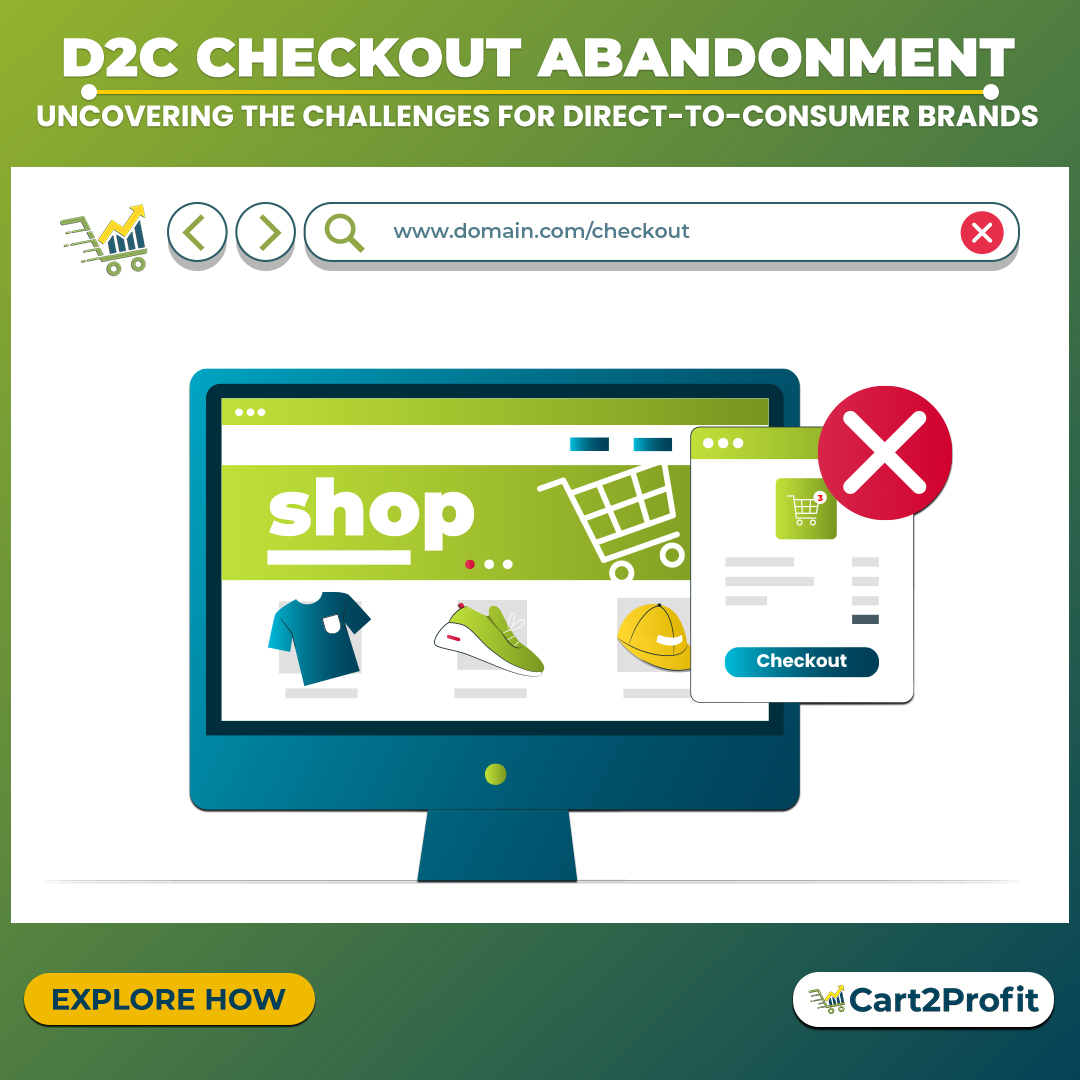Direct-to-consumer (D2C) brands have gained significant adhesion in recent years, offering unique products and customized shopping experiences. However, like any e-commerce business, D2C brands also face the defiances of checkout abandonment. When customers fail to complete their purchases during the checkout process, it can hamper with the revenue growth and customer acquisition efforts.
In This Guide –
Understanding D2C Checkout Abandonment
D2C checkout abandonment refers to a situation where customers who have shown regard in a D2C brand’s products or services initiate the checkout process but do not finish their purchase. It happens when customers abandon their carts during the final stages of the buying journey, resulting in drifted sales opportunities for the D2C brand.
Challenges of D2C Checkout Abandonment
Several challenges contribute to D2C checkout abandonment:
- High Expectations: D2C customers often have high expectations for a flawless and personalized shopping experience. Any friction, problem, or lack of transparency during the checkout process can result in abandonment.
- Brand Awareness: Unlike the established retail brands, D2C brands may face challenges in building brand cognizance and reliance. Customers may be more vigilant when making purchases from relatively unknown D2C brands, resulting in higher abandonment rates.
- Limited Resources: D2C brands may have limited resources compared to larger retail brands, making it problematic to invest heavily in optimizing the checkout process or enacting sophisticated remarketing strategies.
- Competitive Landscape: The D2C space is becoming increasingly crowded with numerous brands competing for customers’ attention. This competition puts a pressure on the D2C brands to provide outstanding user experiences and limit abandonment to stand out from the crowd.
- Complex Product Offerings: Some D2C brands offer difficult or customizable products that require more time and contemplation from the customers. This complexity can grant to higher abandonment rates as customers may need extra information or time to make informed decisions.
Solutions to Reduce D2C Checkout Abandonment
D2C brands can implement the following strategies to reduce checkout abandonment and improve conversion rates:
- Streamline the Checkout Process: Easify the checkout process and limit unnecessary steps and form fields. Secure a clean and intuitive user interface that escorts customers smoothly through the checkout process.
- Enhance Transparency: Provide clear and visible pricing, including any extra fees or charges, upfront. Avoid surprising customers with unexpected costs during the checkout process.
- Build Trust and Credibility: Communicate the brand’s value proposition, unique selling points, and customer testimonials to institute trust and credibility. Display trust badges, security certifications, and social proof to ease customer concerns.
- Optimize for Mobile: Ensure that the D2C website and checkout processes are mobile-friendly. With the increasing use of mobile devices for online shopping, an ideal mobile experience is essential for reducing abandonment rates.
- Leverage Personalization: Use customer data and purchase history to customize the shopping experience. Recommend relevant products, offer personalized discounts, and tailored messaging to improve customer engagement and reduce abandonment.
- Implement Remarketing Strategies: Use abandoned cart emails, personalized offers, and retargeting ads to re-engage customers who have deserted their carts. Provide incentives or limited-time discounts to persuade them to return and complete their purchase.
- Offer Exceptional Customer Support: Provide attainable and responsive customer support channels, such as live chat or chatbots, to address customer problems and supply assistance during the checkout process.
- Monitor Analytics and Test: Continuously monitor checkout analytics, including abandonment rates and conversion metrics. Conduct A/B testing to gauge different checkout various strategies and restate based on data-driven insights.
Author Profile
-
Rajesh Ramachandran
-
Expertise in regulatory and product compliance with over 15+ years of industry experience. Rajesh is an experienced business operations manager who provides his clients with integrity, knowledge, and strategic support on issues including regulatory and product compliance.
🔗 Tags: D2C checkout abandonment


 Inbound Call CenterMay 25, 2024Role of Inbound Call Centers in Customer Satisfaction
Inbound Call CenterMay 25, 2024Role of Inbound Call Centers in Customer Satisfaction Cart Abandonment SolutionAugust 22, 2023D2C Cart Abandonment Solutions for Automotive Industry
Cart Abandonment SolutionAugust 22, 2023D2C Cart Abandonment Solutions for Automotive Industry Cart Abandonment SolutionAugust 22, 2023D2C Cart Abandonment Solutions for Personal Care and Hygiene
Cart Abandonment SolutionAugust 22, 2023D2C Cart Abandonment Solutions for Personal Care and Hygiene Cart Abandonment SolutionAugust 21, 2023D2C Cart Abandonment Solutions for Health and Wellness
Cart Abandonment SolutionAugust 21, 2023D2C Cart Abandonment Solutions for Health and Wellness